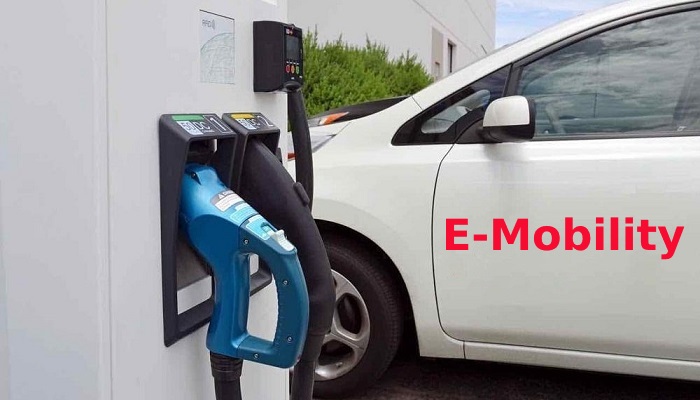~ Is the dawn of dynamic wireless EV charging upon us? ~
For years, the idea of harnessing motorways to power battery electric vehicles (BEVs) through a magnetic field has tantalised researchers. Even as BEV technology advances, the reality remains that EV systems continue to rely on static recharging. Yet, the winds of change are stirring. Here Nicola Acampora, Head of Sales at Hyve Group, organiser of CWIEME Berlin, the leading event for the electrical engineering community, explores dynamic wireless charging — poised to transform transportation and fast-track the transition to electric mobility.
Electric mobility has been on the rise for years, and the promise of a sustainable, environmentally friendly future hinges on its success. Electric vehicles have made remarkable progress in recent years, but one of the persistent challenges has been the inconvenience and time-consuming nature of recharging.
Traditional charging stations necessitate stopping and waiting, which can be a deterrent to potential EV adopters. This inconvenience has often been cited as one of the barriers to the mass adoption of electric vehicles. Also cited as a key factor against switching from combustion engines is “range anxiety”. Difficulties recharging electric cars meant more than half (52 per cent) of car owners surveyed by the Opinions and Lifestyle Survey between 22 September and 3 October 2021, were not likely to switch to electric in the next decade, due to a lack of infrastructure, such as charging stations.
However, dynamic wireless charging technology has emerged as a game-changer in the world of electric mobility. Imagine a world where electric vehicles seamlessly recharge as they cruise down the motorway, with no need to plug in, wait or even slow down. By embedding copper coils beneath the road surface, we have the potential to eliminate range anxiety and the need for frequent stops to recharge.
The concept behind dynamic wireless charging is remarkably simple but extremely impactful. Electric vehicles would be equipped with receiving coils, and motorways fitted with transmitting coils. As the EV travels over the transmitting coils embedded in the asphalt, a magnetic field is generated, inducing an electric current in the receiving coils on the vehicle.
This current charges the vehicle’s batteries while it’s in motion, making the entire process seamless and effortless. Not only is this magnetic-resonance-charging technique practical for EV drivers, but it also generates a grid-to-battery efficiency of up to 94 per cent — the same as a wired connection.
One company, Electreon, an Israeli innovator in the field of wireless electric vehicle charging, has begun to put this idea into motion. Electreon started a pilot programme in Gotland, Sweden in December 2020, for its dynamic wireless charging technology. So far, this has proved successful, as the copper embedded under the asphalt managed to power a 40-tonne truck along the test section of the road.
Significantly, this year the company broke the world record for the longest time and distance ever driven by a passenger electric vehicle. The world record involved a 100-hour non-stop demonstration, during which the vehicle drove 1,942 km as it charged from Electreon’s proprietary Wireless Electric Road technology.
The aim for Electreon is to make EV charging more convenient, especially for public transportation and commercial fleets. The dynamic wireless charging technology eliminates the need for lengthy recharging stops and contributes to cleaner urban air.
While dynamic wireless charging presents an exciting opportunity for electric mobility, challenges remain. Infrastructure development and standardisation are critical hurdles that must be overcome.
The costing of the initial investment is a hinderance, with an estimation of millions of US dollars being needed for a single kilometre of road to be fitted with copper coils. The disruptive nature of the installation of the copper under the road surface would cause many road closures, as well as the maintenance once its installed. On top of this, heavy traffic and extreme weather conditions could affect the durability of the embedded infrastructure leading to maintenance concerns and expenses.
Another potential obstacle is the health and safety aspects of the technology. Some have raised concerns about prolonged exposure to a high electromagnetic field, however, scientific studies have shown no conclusive evidence of this causing any harm.
Nevertheless, with innovation and investment, these hurdles can be addressed, and we can pave the way for a more sustainable and convenient future. CWIEME Berlin, which is held at Messe Berlin from May 14-16, 2024, plays a crucial role in fostering discussions, collaborations and innovations in the field of e-mobility. The dynamic wireless charging concept is a testament to the ingenuity of engineers and researchers, and it highlights the potential for groundbreaking advancements in the industry.
As we move forward, we should embrace the promise of dynamic wireless charging with enthusiasm and support further research and development in this area. The vision of electric vehicles charging on the go is no longer a distant dream, it’s a reality that’s within our grasp. With dynamic wireless charging, we’re not just driving towards a cleaner future, we’re accelerating towards a more convenient and sustainable tomorrow.
To learn more about innovations in the electric vehicle industry head over to the CWIEME Berlin website, where we facilitate a platform for industry experts to share their knowledge and solutions to an international audience.










































